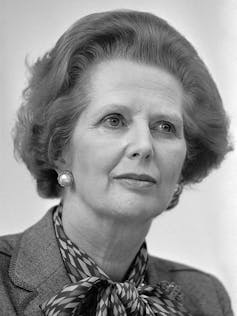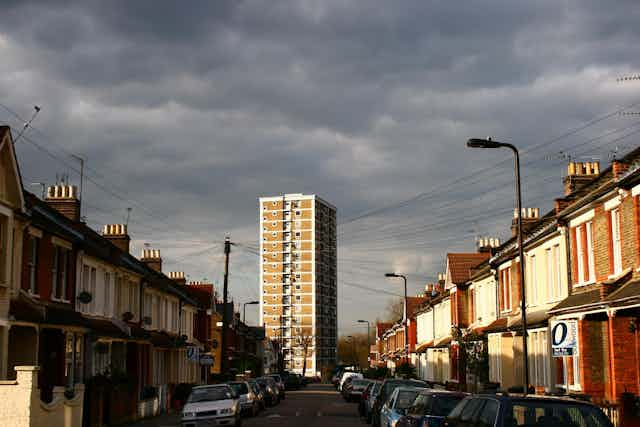It has been 25 years since Margaret Thatcher gave her final, tearful speech as prime minister of the UK on the steps of Downing Street. In the decades since, we’ve had time to get to grips with the legacy left behind by one of the most polarising figures in British politics. Cutting through the visceral, ideological storm she left in her wake has been no easy task, and our research has found that the story told by the data is more complex than we could have imagined.
Two things stand out from Thatcher’s early days in office: her commitment to upholding “law and order” and support for the police, and her aim to give “ordinary people” the chance to own their own homes. Ultimately, these aims would prove to be self-defeating: Thatcher’s “right-to-buy” policy actually ended up increasing inequality and worsening crime in the UK’s most deprived areas. Here’s how it happened.

The right-to-buy your council home, if you were a sitting tenant, was introduced by the 1980 Housing Act. All of a sudden, people who had never had the option before could realistically think about owning their own home. But of course, just like today, people preferred some types of housing over others. A detached house was the dream; failing that, a semi-detached house; and as a third preference, a terraced house would do.
Flats – especially flats in high-rise blocks – were not a popular option back then. So, over time, as people bought the homes they once rented from their local councils, the authorities were left with a depleted housing stock, and a very different portfolio of properties. “Nice” houses on “nice” estates went quickly, while less desirable accommodation hardly shifted at all.
This was particularly noticeable in localities where jobs were lost due to wider economic restructuring, which particularly affected communities in the former industrial heartlands of the midlands, northern England, Scotland and south Wales.
A last resort
Slowly, council estates started to be the preserve of society’s poorest citizens, whom councils had an obligation to house under the 1977 Homeless Persons Act. But many factors contribute to homelessness: people who are homeless are also more likely to have mental health problems, be unemployed or unable to work – often for reasons outside their control. As a result, council-owned tower block estates started to become “social containers” for many people facing such difficulties.
As jobs left an area, drug use increased – a trend exacerbated by the heroin epidemic of the 1980s. And in localities where drug use increased, so did pretty crime. Over time, the once-respectable council housing estates of the 1950s and 1960s started to be regarded as the housing of last resort.
Councils were prevented by government policy from using any of the money raised from the sale of their properties to either build new homes or refurbish old ones. As a result, local authorities struggled to maintain the standards of their accommodation, and more and more of their housing stock became dilapidated.
Tough times
Under these pressures, some families broke down. Children of divorce did worse academically and were more likely to get excluded from school, which led to an increased likelihood of juvenile delinquency. Petty crime, thefts from poorly protected houses, car jacking and the rise of the drug economy meant that over the next 15 to 20 years the location of crime gradually but persistently shifted toward disadvantaged areas with more social housing. Crime was going up generally, but it appears to have gone up especially sharply for those in the socially rented sector.
This redistribution is evident when you look at the data collected about crime over the years. Before 1980, the General Household Survey found that those who owned their own homes were consistently less likely to be the victims of domestic thefts than those in rented council housing – but only slightly so. On average, there were 0.02 thefts from the homes of owners, and 0.03 from those of social renters.
But throughout the 1980s and into the 1990s, the British Crime Survey (now called the Crime Survey for England and Wales) showed a dramatic increase in rates of property crimes for those living in the social rented sector. And while those living in their own homes did experience rises too, these were neither as dramatic, nor as pronounced. In 1982, the average number of domestic property crimes reported by owners was 0.13, while for social renters it was 0.22. This rose throughout the 1980s and 1990s so that by 1996 the figures were 0.15 for owners and 0.34 for social renters.
By introducing right-to-buy, while requiring councils to house those in greatest need, and preventing them from building new homes, our research suggests that Thatcher’s government fuelled the spatial redistribution of domestic property crime. While Thatcher may have won some additional votes from those who could afford to buy a decent home under the scheme, the brunt of the harmful, long-term effects were borne by society’s most disadvantaged citizens.

